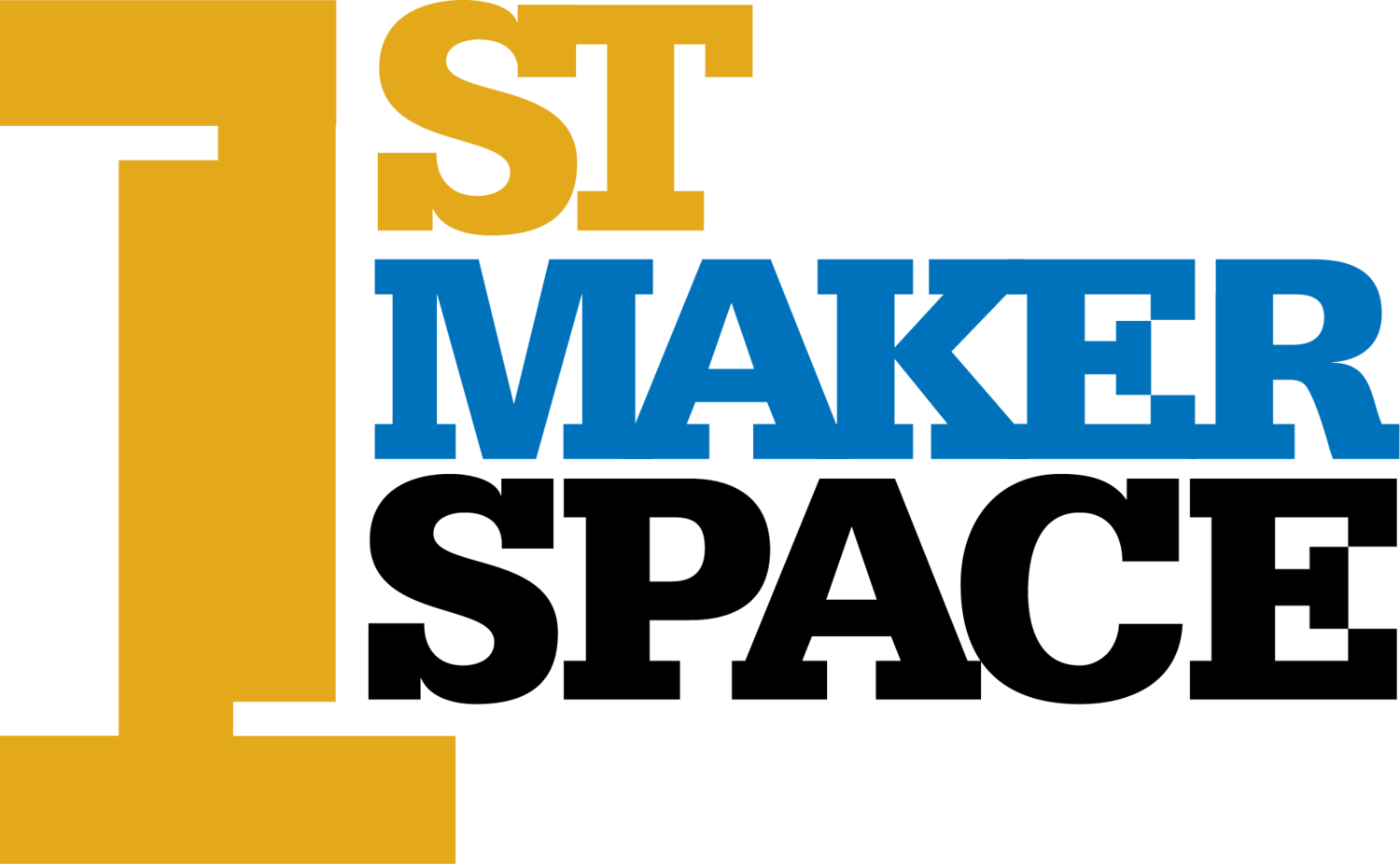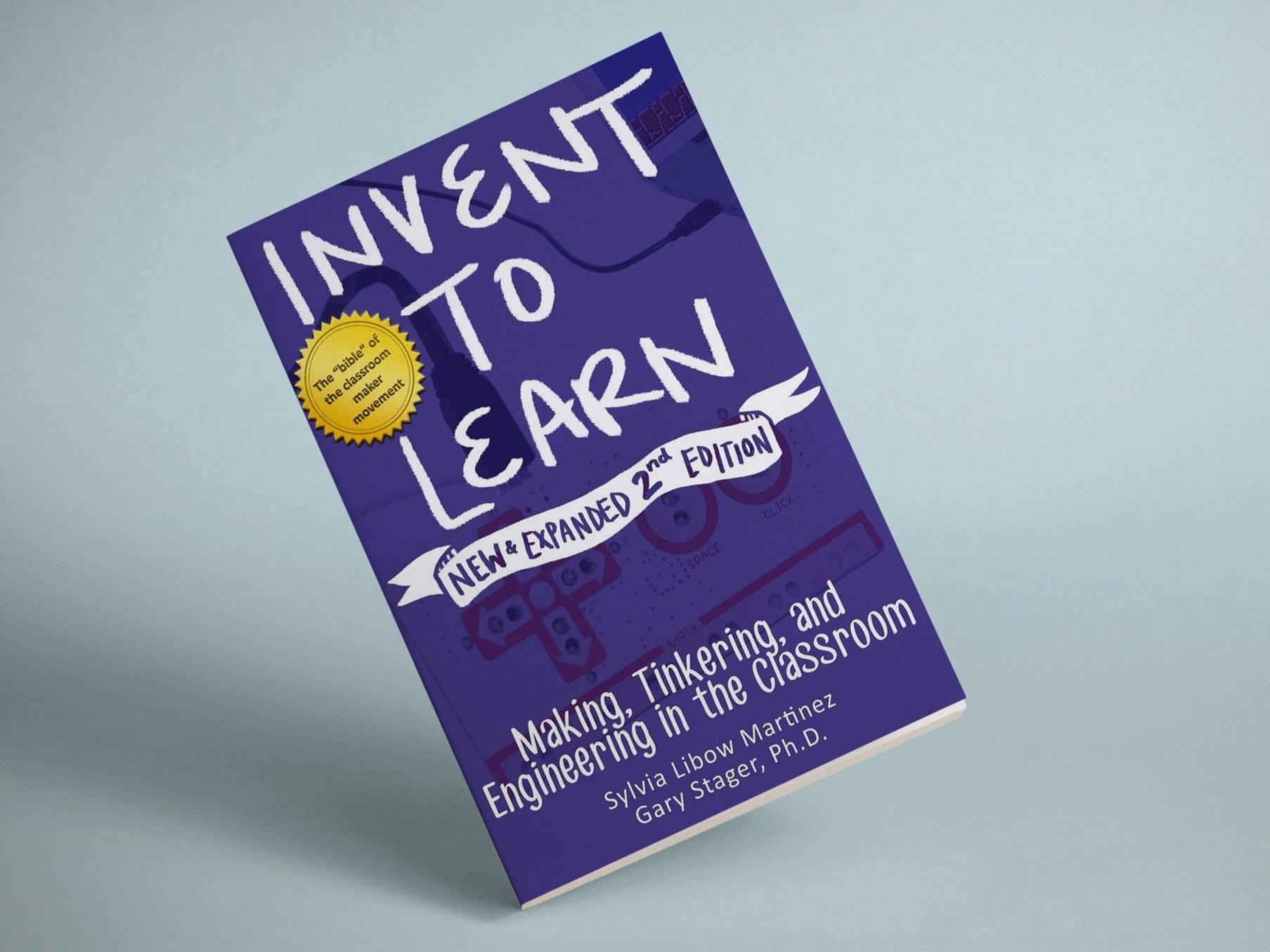Invent To Learn: The Maker Movement's Guide To Innovation In Education
One of 1st Maker Space's biggest inspirations comes from the groundbreaking book 'Invent to Learn' by Sylvia Libow Martinez and Gary Stager. We have designed our entire approach to support maker-minded education – providing resources like free STEM curricula, hands-on professional development workshops, and high-quality furniture made for making.
As a comprehensive guide to the maker movement and maker education, this influential work has shaped our approach to designing makerspaces and provided invaluable insights on fostering creativity, critical thinking, and problem-solving skills in students across various learning environments.
In this article, we'll dive into the key concepts and ideas presented in 'Invent to Learn,' exploring its role as a catalyst for change in today's educational landscape. We'll examine how it equips educators with essential tools and strategies needed for nurturing young innovators through hands-on learning experiences that fuel their passion for STEM subjects.
Join us as we delve into the world of making and uncover its transformative impact on teaching practices, curriculum development, and, ultimately, the future of STEM education.
Foundational Concepts
At 1st Maker Space, our ethos and foundational concepts are based on the book 'Invent to Learn: Making, Tinkering, and Engineering in the Classroom.' We love sharing its message with educators we work and consult with!
The authors, Sylvia Libow Martinez and Gary Stager provide a comprehensive guide to understanding the maker movement and how it can positively impact education by fostering a maker mindset among students. This mindset involves hands-on experiences encouraging creative exploration while empowering students to learn through doing.
One of the critical aspects of this book is its focus on learning theories that underpin the maker movement's approach to education. Drawing from educational pioneers such as Piaget, Dewey, and Papert, 'Invent to Learn' emphasizes the importance of learning by doing – allowing students to develop their skills through practical application rather than just theory.
By incorporating these learning theories into our work at 1st Maker Space, we strive to create engaging environments where students can explore their interests while building valuable STEM skills.
Another crucial aspect of 'Invent to Learn' is its emphasis on student empowerment – encouraging learners to take ownership of their projects and giving them opportunities for self-directed exploration. At 1st Maker Space, fostering this sense of autonomy is critical for nurturing creativity and innovation among young minds.
That's why we provide resources like free STEM curriculum and professional development workshops designed specifically for educators who want to incorporate more hands-on experiences into their classrooms.
As proponents of the maker movement in education at 1st Maker Space, we highly recommend 'Invent to Learn' as an invaluable resource for teachers seeking guidance on implementing innovative teaching methods in their classrooms. Whether you're new to the concept or already familiar with it but looking for fresh ideas and insights, this book offers a wealth of knowledge that will help you foster a culture of creative exploration and student empowerment within your school or community.
Embracing Technology
It's essential to embrace technology in our classrooms and into our curriculum to foster personalized learning experiences for our students, even if it sometimes seems overwhelming.
It's crucial to bridge the digital divide and ensure equal access to quality education for all students. We strive to close the gap between those with access to technology and those without access by providing resources and support for schools in need. By embracing these technological advancements in education, we empower students with essential skills they will need as they enter an increasingly competitive workforce. Moreover, integrating technology into our teaching practices allows us to make better use of classroom time by focusing on collaborative projects that encourage creativity and critical thinking – hallmarks of a maker mindset.
As we are inspired by 'Invent To Learn,' we remain committed to exploring new technologies that can transform our teaching and learning. We want to help foster an environment where students can harness their potential as lifelong learners.
Project-Based Learning
By embracing project-based learning inspired by 'Invent to Learn,' we're teaching our students essential STEM skills and nurturing their innate curiosity and love for learning.
Project-based learning thrives on creative exploration and real-world connections. By allowing students to work on projects that resonate with their interests and have tangible applications, we help give a deeper understanding of complex concepts while promoting critical thinking and innovation.
This interdisciplinary approach encourages students to draw from various fields of knowledge as they tackle challenges and develop solutions together.
Student empowerment is at the core of project-based learning. Learners gain confidence in navigating unfamiliar territory and adapting to new situations by providing opportunities for self-directed inquiry and experimentation.
In this supportive environment that values process over product, mistakes become valuable lessons rather than setbacks, strengthening resilience and determination among our budding innovators.
Tools and Resources
In 'Invent to Learn,' we explore various technologies, materials, and methods that foster a maker mindset in educators and students alike. This approach encourages creative exploration through hands-on learning experiences that enrich understanding and cultivate student ownership over their educational journey.
One key aspect of fostering a maker mindset is providing opportunities for students to experiment with different tools and resources in a safe, supportive environment. The possibilities are endless, from low-cost items like cardboard tubes, motors, or broken toys to more advanced technologies such as 3D printers or laser cutters. Encouraging students to tinker with these materials allows them to discover new interests while developing essential skills like problem-solving, critical thinking, and collaboration.
Another essential element in promoting creative exploration is incorporating project-based learning activities that encourage hands-on engagement. Integrating real-world challenges into classroom instruction invites students to apply their knowledge across multiple subject areas, exposing them to diverse perspectives and fostering interdisciplinary connections.
For example, combining art with engineering principles can lead to innovative design projects; blending history lessons with coding activities may result in interactive timelines or virtual simulations.
Ultimately, educators must facilitate an environment where curiosity is celebrated, and experimentation is encouraged. By weaving together a rich tapestry of tools, resources, and hands-on learning experiences within an integrated curriculum framework, we empower our students as learners and creators with the confidence and skills needed for tomorrow's world.
Community Involvement
By incorporating various aspects of the community into STEM education, we can create a network that benefits our students and helps strengthen bonds between local organizations, parents, and schools.
With maker festivals, funding opportunities, parent workshops, and industry connections readily available, we can utilize these resources to bolster the innovative spirit within our educational system. These events showcase the fantastic work of makers from all walks of life while inspiring others to join this exciting movement.
Harnessing grants and other financial support from local businesses and foundations can help provide necessary resources for your school’s initiatives. Empowering parents with hands-on maker experiences can help them better understand their child's learning process while fostering a solid home support system.
Collaborating with nearby organizations such as libraries or art centers will open up exciting possibilities for cross-disciplinary projects that enrich students’ learning experiences. Involving industry professionals in educational initiatives further strengthens the connection between what is taught at school and real-world applications.
Inviting guest speakers to share their expertise or organizing field trips to local companies can expose students to potential career paths they might have yet to consider. Establishing these connections early on encourages children's interest in STEM fields by providing tangible examples of how their skills are practiced outside the classroom. Success lies within our ability to collaborate with those around us.
The Maker Manager Program
At 1st Maker Space, we believe in equipping educators with the skills, knowledge, and mindset necessary to implement and sustain successful maker-centered education environments. That's why we've developed our Maker Manager Program, designed around the principles of 'Invent to Learn.'
Our Maker Manager Program is an intensive four-day training course where participants are guided through creating, assessing, and maintaining a thriving makerspace, STEM Lab, or innovation space. The program covers a wide range of topics, from the foundational principles of the maker movement to practical aspects such as space management and safety practices.
Throughout the course, we foster a maker mindset among participants, providing personalized coaching to ensure every individual can effectively apply what they've learned to their unique educational setting.
We equip participants with a robust framework to create a Culture of Making and Innovation within their schools and communities by drawing from educational theories such as Constructivism, Constructionism, Project-Based Learning (PBL), and Inquiry-Based Teaching and Learning.
A successful makerspace extends beyond the walls of a classroom. Hence, our Maker Manager Program offers guidance on building a supportive maker community within your school or organization, including tips on making a compelling case for your program.
Understanding the role of curriculum development in student success is critical. As part of our program, we explore the benefits of a carefully crafted curriculum and discuss assessment strategies that accurately reflect your student's knowledge and skill gains.
Upon completion of the program, participants receive a Maker Manager Certification from 1st Maker Space, serving as a testament to their expertise and readiness to lead a maker-centered educational environment.
By integrating the principles of 'Invent to Learn' into our Maker Manager Program, we continue our commitment to transforming education and preparing the next generation for a future filled with innovation, creativity, and lifelong learning.
Expanding the Maker Movement: Global Impact
The maker movement transcends geographical boundaries, as it unites individuals, institutions, and communities across the globe in a shared passion for innovation and creativity. The maker movement has witnessed rapid growth, with makerspaces, Fab Labs, and tech-focused educational programs sprouting up in countries worldwide.
This global collaboration has expanded the reach and impact of the maker movement, as it sparks dialogues, partnerships, and knowledge-sharing between diverse communities. By exchanging ideas, techniques, and educational approaches, it becomes possible to foster innovation and creativity on an international scale.
From the United States to Europe, Asia to Africa, the maker revolution has demonstrated its potential to transform education and shape the future of STEM. As more schools and educational institutions adopt the maker mindset, they empower students to develop critical life skills, resilience, and creativity – qualities that will benefit them regardless of their chosen career paths.
When educators engage with their international counterparts, they can glean valuable insights, enabling them to evolve their teaching practices better to suit the needs of a growing global society.
Together, we can pave the way for a new generation of students proficient in STEM subjects and possess the vital interpersonal and creative abilities to face the challenges of an increasingly interconnected world.
Conclusion: A Maker-Centered Future
Equipped with the guiding principles of 'Invent to Learn,' the team at 1st Maker Space is committed to supporting educators, transforming classrooms, and inspiring the next generation through maker-centered education. By fostering the maker mindset and providing the necessary resources for hands-on learning, we empower future innovators and leaders to excel academically and professionally.
Our journey is one of continuous growth and exploration as we strive to share our knowledge and collaborate with others who share our passion for empowering students. We know that by working together, we can transform STEM education and the lives of young people worldwide.
We'd love to discuss how we can help your school or district implement maker-centered education to benefit your students and community. Together, we can create a world where innovation thrives, and students are empowered to explore, design, and learn through doing.


